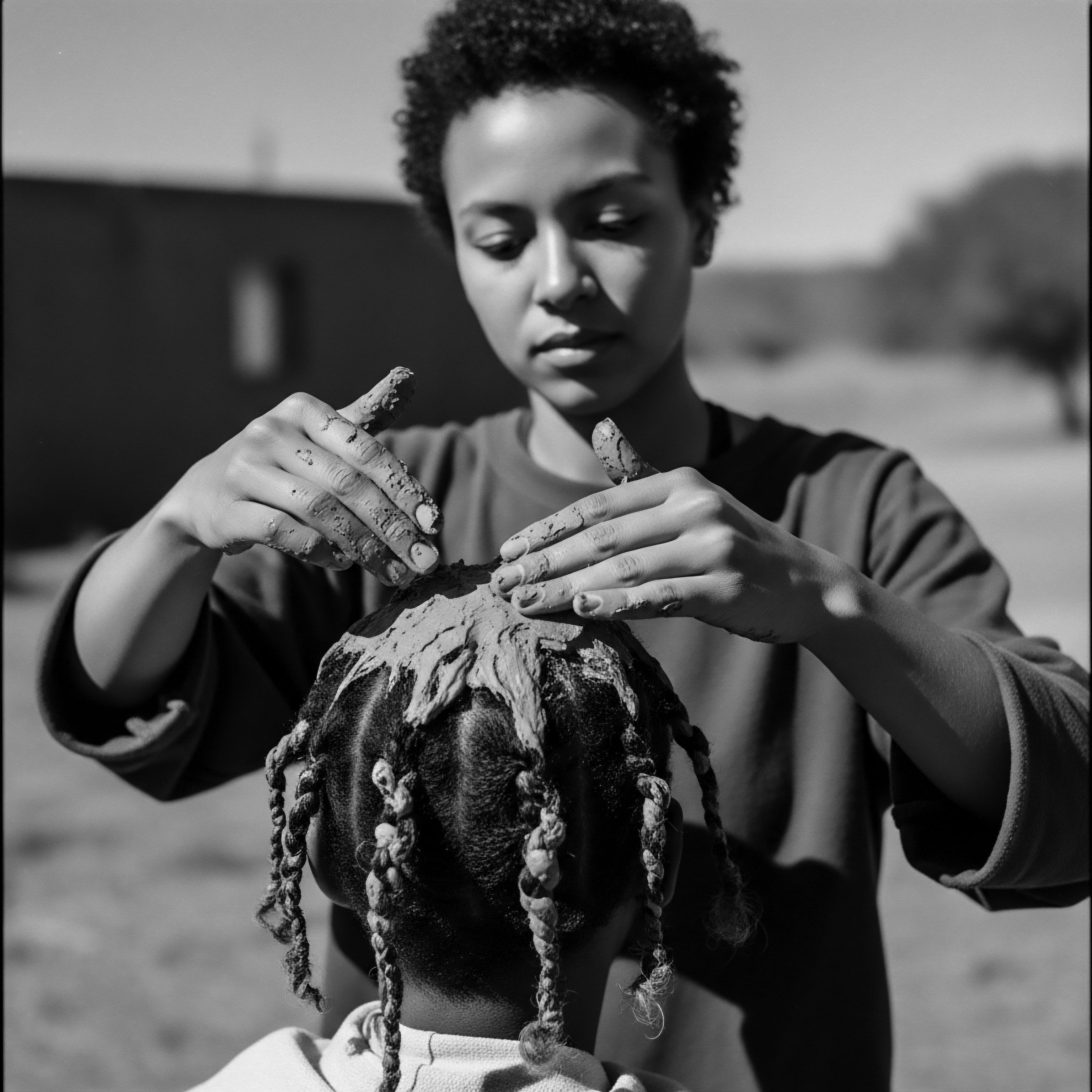
Fundamentals
Hair Care Chemistry, at its most elemental, considers the profound interplay of the substances and forces that shape and transform our hair, understanding the very building blocks of each strand. For those new to this intricate dance of elements, it begins with recognizing hair not as a simple accessory, but as a complex biological structure, rich with its own intrinsic properties and vulnerabilities. It is an exploration into what hair is made of, how it behaves, and how various agents — from the earth’s bounty to human innovation — interact with it. This fundamental understanding is particularly resonant when we consider the diverse and resilient nature of Textured Hair, whose heritage is deeply entwined with an instinctive, practical application of chemical principles long before the advent of laboratories.
At the heart of hair’s being lies Keratin, a robust protein, forming the foundational structure of the hair shaft. This keratin, configured into intricate polypeptide chains, is responsible for hair’s strength and flexibility. The way these protein chains link together, particularly through disulfide bonds between cysteine amino acids, dictates the hair’s inherent shape, whether it emerges from the scalp as straight, wavy, curly, or intricately coiled.
For those with textured hair, these disulfide bonds are more numerous and more closely packed, creating the distinctive spirals and bends that define the crown. This fundamental chemical architecture of the hair fiber, with its unique challenges and strengths, sets the stage for every interaction.
Beyond the protein backbone, hair also possesses a delicate outer layer, the Cuticle, composed of overlapping scales that protect the inner cortex. The condition of these scales, influenced by pH and external agents, profoundly impacts how hair looks and feels, determining its smoothness, sheen, and resistance to damage. An intact, smooth cuticle reflects light beautifully and helps retain moisture, while a raised or damaged cuticle can lead to dryness and brittleness. This basic principle was understood intuitively by ancestral communities who used natural ingredients to seal the cuticle, long before the terms “pH balance” or “protein hydrolysis” entered any lexicon.
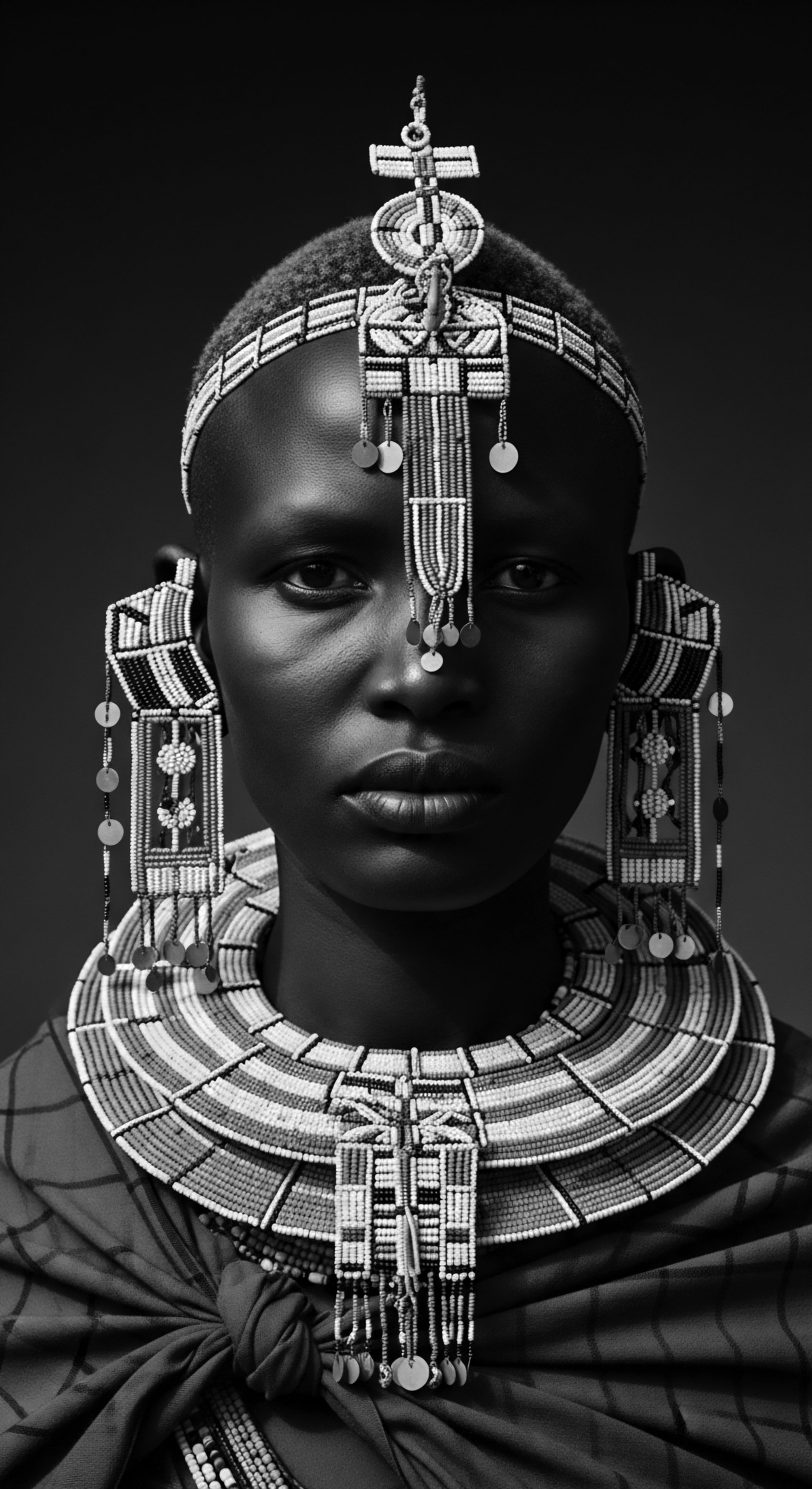
Ancestral Wisdom in Elemental Care
Even in the earliest expressions of human adornment and self-care, a rudimentary, yet effective, form of hair care chemistry was practiced. Our ancestors, intimately connected to the rhythms and resources of their immediate surroundings, developed sophisticated routines that leveraged the natural chemical properties of plants, minerals, and animal derivatives. They observed, tested, and refined methods for cleansing, conditioning, and styling hair, passing down this knowledge through generations, often as an integral part of cultural identity and spiritual practice.
- Plant-Based Cleansers ❉ Many indigenous communities utilized saponin-rich plants, such as the bark of the Gugo Vine in the Philippines, which produced a soap-like foam when agitated in water. This foam, rich in saponins, phenolic compounds, and triterpenes, acted as a natural surfactant, gently lifting dirt and oil without stripping the hair of its vital moisture. The wisdom here lay in understanding that certain plants possessed inherent cleansing abilities, a chemical function rooted in their molecular structure.
- Earth-Derived Agents ❉ Clays, like Rhassoul Clay from Morocco, were prized for their absorbent properties, drawing impurities from the hair and scalp while imparting essential minerals. These clays, composed of layered silicate minerals, interact with water and oils on a molecular level, allowing for effective, yet gentle, purification.
- Natural Oils and Butters ❉ Across various African traditions, substances like Shea Butter (from the Karite tree) and baobab oil were regularly applied. These emollients, brimming with fatty acids, vitamins, and antioxidants, formed protective barriers on the hair shaft, preventing moisture loss and conferring elasticity. The consistent use of such oils and butters in West African traditions, especially in hot, dry climates, speaks to an inherited understanding of lipid chemistry for maintaining hydration and length retention.
These foundational practices, seemingly simple, laid the groundwork for all subsequent hair care advancements. They represent an inherent human curiosity about the natural world and a practical application of observed chemical reactions to nurture the hair.
The fundamental understanding of Hair Care Chemistry begins with appreciating the inherent structure of the hair strand and its interaction with natural elements, echoing ancestral practices of care.
| Aspect of Care Cleansing |
| Ancestral Practice (Heritage Link) Utilizing saponin-rich plants like Gugo bark or absorbent clays to purify the scalp and strands. |
| Modern Scientific Understanding Identifying surfactants (e.g. sulfates, mild non-ionic detergents) that emulsify oils and dirt for removal, while aiming to preserve natural moisture. |
| Aspect of Care Moisturizing |
| Ancestral Practice (Heritage Link) Applying plant oils (e.g. coconut oil, castor oil) and rich butters (e.g. shea butter) to seal moisture and soften. |
| Modern Scientific Understanding Formulating products with emollients (fatty acids, esters), humectants (glycerin, hyaluronic acid), and occlusives to hydrate and prevent water loss. |
| Aspect of Care Styling/Protection |
| Ancestral Practice (Heritage Link) Using natural resins, waxes, and animal fats to hold styles and shield hair from environmental factors. (Ancient Egyptians used fat-based products for styling and preservation.) |
| Modern Scientific Understanding Developing polymers and fixatives that create flexible or rigid bonds to maintain styles, alongside heat protectants and UV filters to guard against damage. |
| Aspect of Care This table illustrates the continuous thread of hair care wisdom, where ancient solutions often find validation in contemporary chemical principles, especially for the unique requirements of textured hair. |
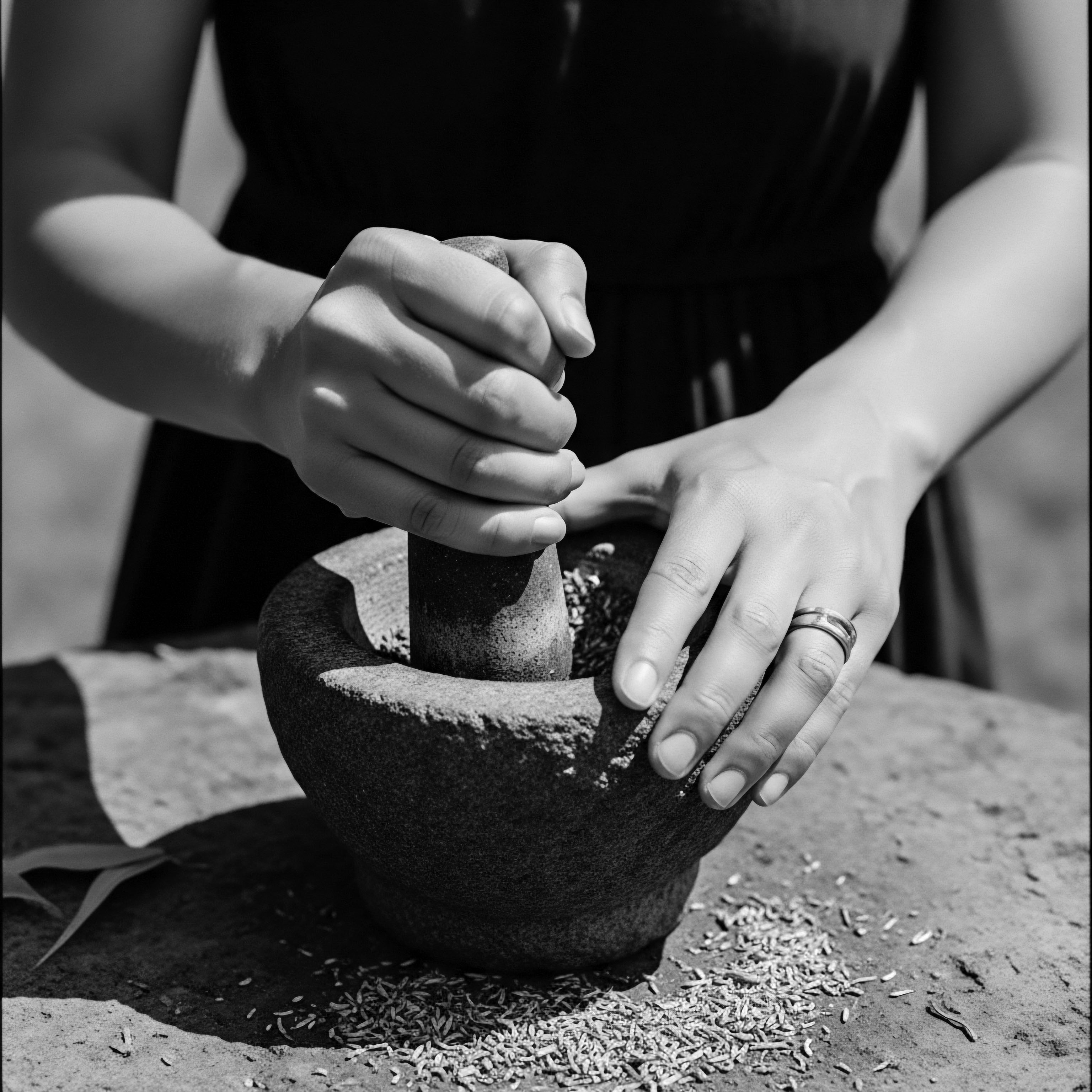
Intermediate
Moving beyond the elemental, an intermediate appreciation of Hair Care Chemistry delves deeper into the dynamic interactions that govern hair’s health and appearance, especially pertinent for the diverse textures found within Black and mixed-race communities. This level of understanding examines how subtle shifts in chemical environments impact the hair fiber, influencing its strength, moisture retention, and overall vitality. It recognizes that hair is not a static entity but a living structure, constantly responding to its surroundings and the products applied to it.
The concept of PH Balance, for instance, becomes more pronounced at this stage. Hair and scalp thrive in a slightly acidic environment, typically between pH 4.5 and 5.5. This acidity helps keep the cuticle scales tightly closed, leading to smoothness and reducing friction. Many traditional hair care practices, such as the use of acidic rinses like diluted vinegar or fermented rice water, unknowingly leveraged this chemical principle.
These rinses would counteract the alkaline nature of some traditional cleansing agents, helping to restore the hair’s natural acidity and seal the cuticle, thereby enhancing sheen and reducing tangles. This practice reflects a deep, observational understanding of how natural substances could chemically restore hair’s optimal state.
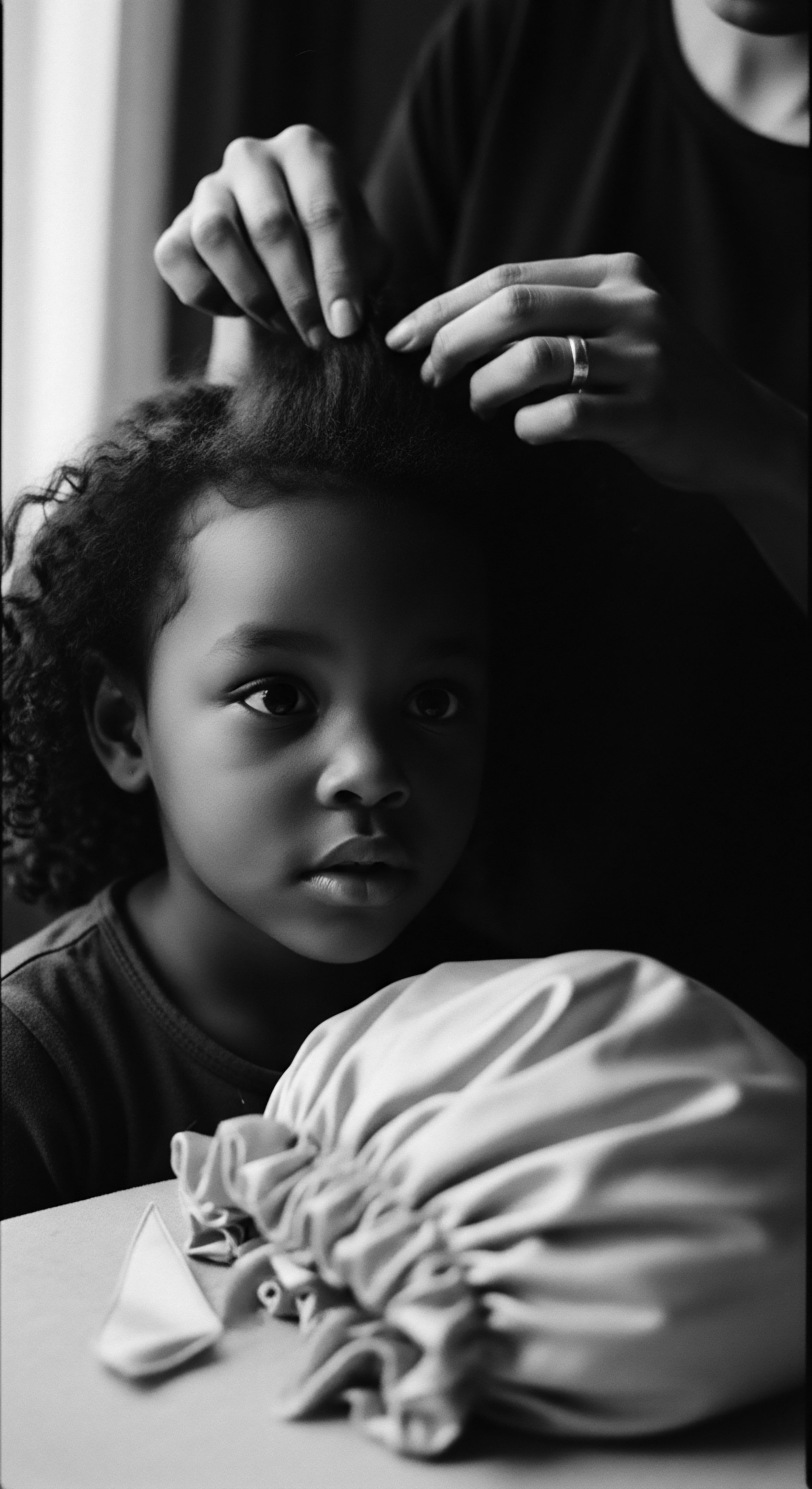
The Architecture of Textured Hair
Textured hair, with its unique coily and curly configurations, possesses specific chemical characteristics that influence its care. The elliptical shape of the hair follicle produces a flattened, ribbon-like hair shaft, leading to more twists and turns along its length. These structural nuances mean that natural oils, or Sebum, produced by the scalp, struggle to travel down the spiraled strands, leaving the ends often drier and more prone to breakage. This inherent dryness is a significant consideration in textured hair care chemistry.
Furthermore, the density of disulfide bonds within textured hair contributes to its spring and strength but also makes it more susceptible to damage from excessive manipulation or harsh chemical treatments. Understanding these intrinsic properties allows for a more informed selection of products and techniques that honor the hair’s natural inclinations rather than working against them. The goal is to provide balanced hydration and gentle care that respects the unique chemical composition of coily and curly strands.
Understanding the chemical composition of textured hair, including its elliptical follicle shape and disulfide bond arrangement, provides a foundation for informed care practices.
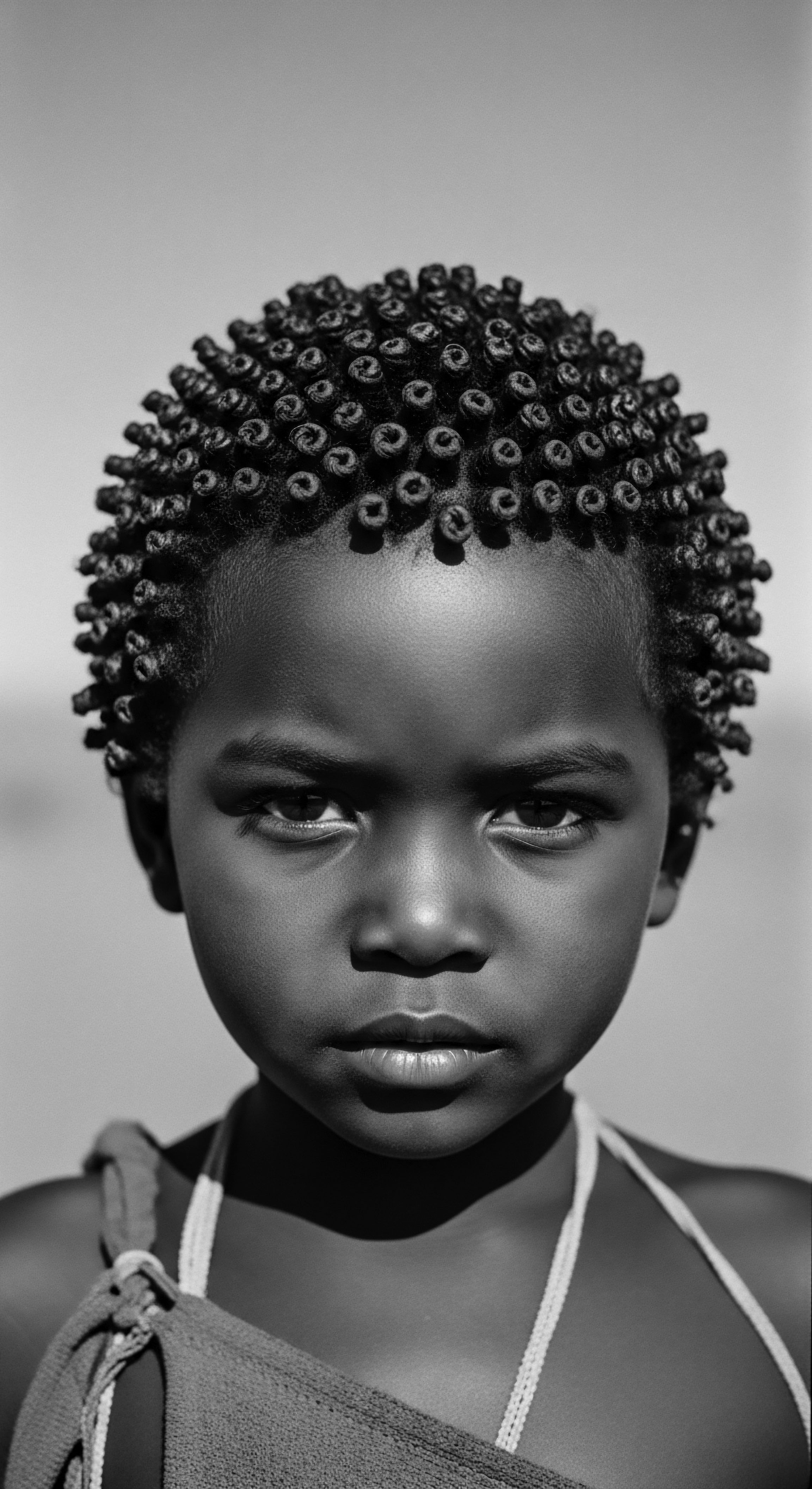
Refined Ancestral Formulations
Ancestral practices for textured hair often evolved into sophisticated, multi-ingredient formulations, reflecting an accumulating body of knowledge about botanical chemistry. These were not random mixtures but carefully observed combinations, each ingredient selected for its specific beneficial properties.
- Chebe Powder Blends ❉ Hailing from the Basara Arab women of Chad, Chebe Powder is a traditional remedy made from a combination of natural herbs, seeds, and plants such as Croton zambesicus, cherry kernels, cloves, resin, and stone scent. When roasted, ground, and mixed with oils, this powder does not necessarily promote growth from the scalp but significantly aids in length retention by coating and strengthening the hair shaft, reducing breakage, and locking in moisture. This ancient technique embodies a practical understanding of protective barriers and moisture sealing, chemical principles that are now scientifically validated. The components in Chebe powder, through their specific phytochemicals, likely create a resilient coating that minimizes friction and environmental damage.
- Henna as a Hair Modifier ❉ Across North Africa and the Middle East, Henna (from the Lawsonia inermis plant) was used not only as a natural dye but also for its conditioning and strengthening attributes. The active compound, Lawsone, binds to the keratin in the hair, adding a protective layer and improving structural integrity, especially for hair prone to shedding or environmental stressors. This traditional dye illustrates an early application of organic chemistry for both aesthetic and fortifying purposes.
- Complex Oil and Butter Infusions ❉ West African traditions frequently combined various oils and butters, sometimes infusing them with herbs. For instance, the use of Baobab Oil, rich in omega-3 fatty acids, alongside ingredients like Moringa and Argan Oil, demonstrates an awareness of diverse lipid profiles for comprehensive hair and scalp nutrition. These blends provided varying levels of penetration and surface protection, speaking to an intuitive grasp of how different molecular weights and compositions could address distinct hair needs.
The progression to more complex, multi-component recipes reveals a deeper, empirical understanding of Hair Care Chemistry. These practices were not just rituals; they were sophisticated, albeit unquantified, chemical processes designed to optimize hair health within specific environmental contexts. The legacy of these preparations continues to shape natural hair care today, demonstrating the enduring power of ancestral wisdom.
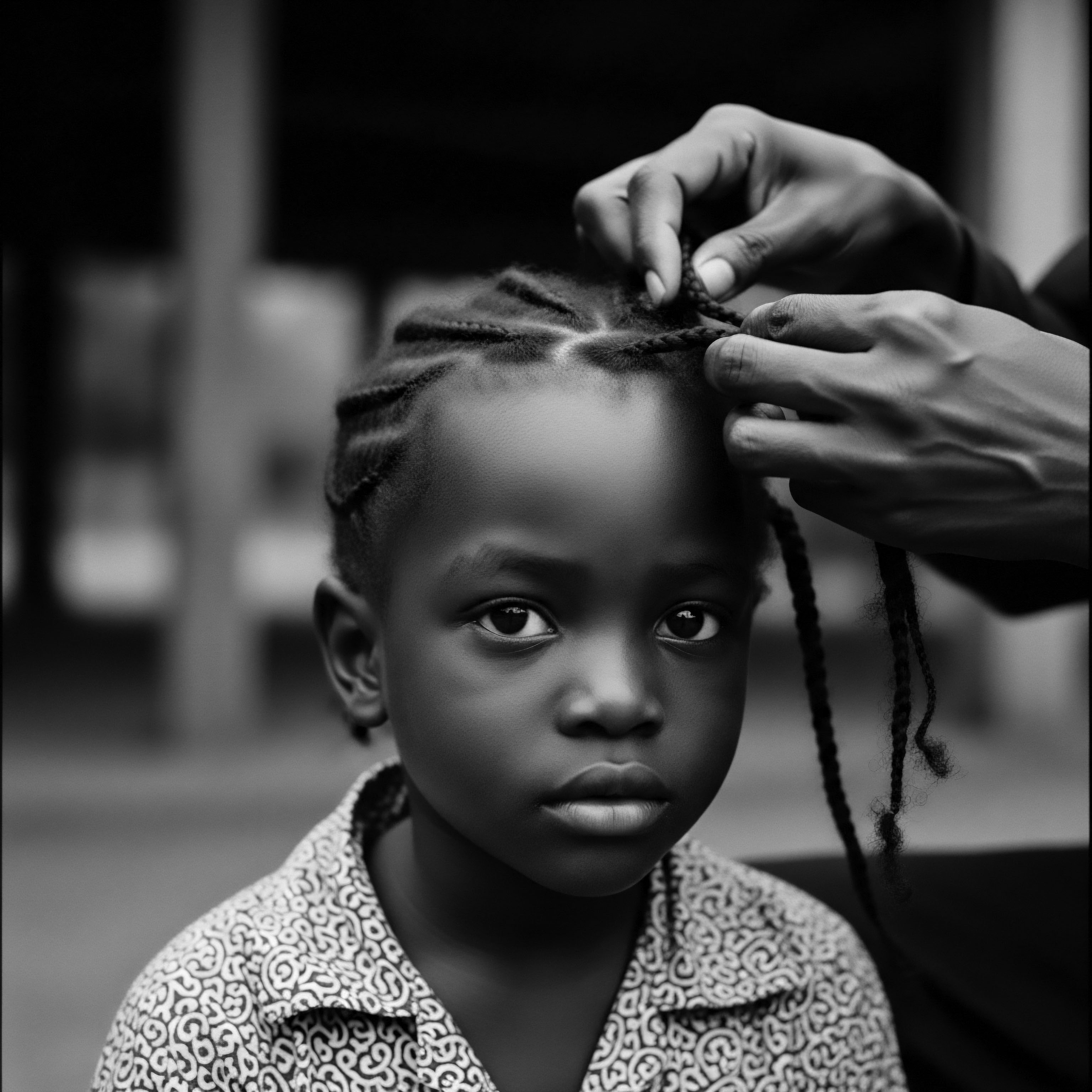
Academic
Hair Care Chemistry, from an academic vantage point, represents a rigorous scientific discipline dedicated to understanding the molecular and macroscopic interactions that govern the structure, function, and aesthetic properties of human hair. This specialized field draws upon principles of organic chemistry, polymer science, biochemistry, and material science to dissect the complexities of the hair fiber, its constituent proteins, lipids, and water content, and how these components respond to external agents. It is an area of study that strives to explain, predict, and manipulate hair’s behavior, underpinning the development of advanced hair care formulations and treatments. The academic inquiry into Hair Care Chemistry acknowledges the profound biological uniqueness of various hair types, particularly Afro-Textured Hair, and seeks to provide evidence-based insights that validate or reformulate traditional care practices.
At its core, Hair Care Chemistry examines the fundamental composition of the hair shaft. This shaft is primarily composed of Keratin Proteins, intricately arranged in a hierarchical structure from microfibrils to macrofibrils, all encased within the protective cuticle. The mechanical properties of hair — its elasticity, tensile strength, and resistance to breakage — are directly linked to the arrangement and cross-linking of these keratin subunits, particularly through Disulfide Bonds (covalent bonds between cysteine residues), hydrogen bonds, and ionic interactions. For textured hair, the unique elliptical cross-sectional shape of the fiber and the uneven distribution of sulfur-rich disulfide bonds result in its characteristic coiling.
This geometry inherently creates points of weakness along the bends and twists, rendering it more prone to tangling and mechanical fracture, and also impacts how effectively sebum travels down the strand. The academic definition of Hair Care Chemistry, therefore, must consider these inherent structural nuances as the bedrock of effective care strategies for textured hair.
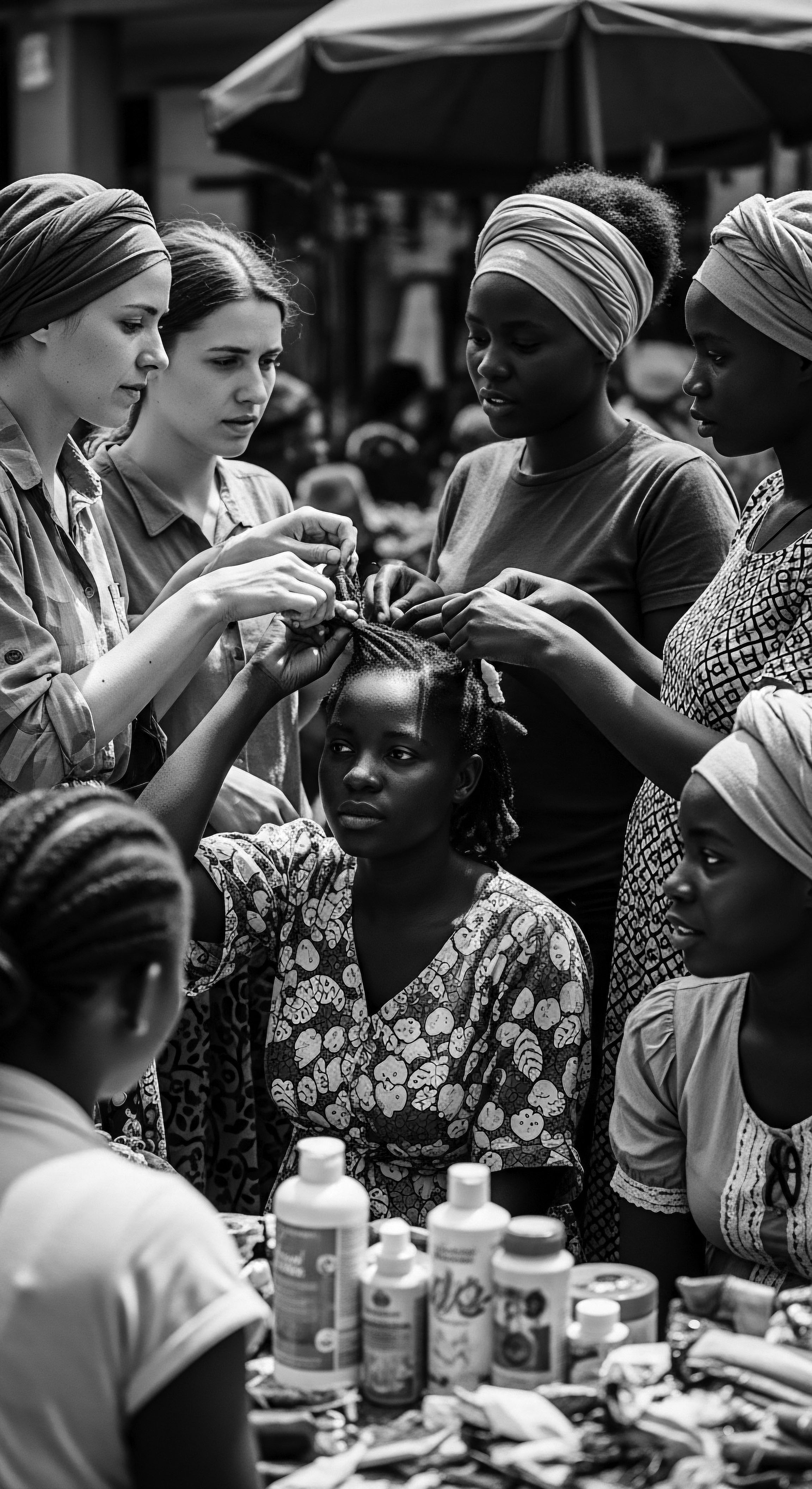
The Biophysical Peculiarities of Textured Hair and Chemical Interventions
The biophysical characteristics of textured hair present specific challenges and opportunities for chemical interventions. Its helical structure, while evolutionarily adaptive for UV radiation protection and scalp temperature regulation, also means that the cuticle layers at the bends are more exposed and susceptible to lifting, leading to increased porosity and moisture loss. This elevated porosity can allow for easier absorption of water and beneficial ingredients but also predisposes the hair to rapid dehydration and chemical damage. The academic lens precisely quantifies these phenomena, studying water adsorption isotherms, protein loss via various treatments, and the impact of environmental stressors on hair integrity.
Consider the profound historical context of chemical hair alteration within Black and mixed-race communities. The societal pressure to conform to Eurocentric beauty standards, which historically favored straight hair, led to widespread reliance on chemical straighteners, often known as Relaxers. These products fundamentally alter the hair’s disulfide bonds through a process of lanthionization, irreversibly breaking and then reforming these bonds in a straightened configuration.
The potent alkaline agents, such as sodium hydroxide (lye relaxers) or calcium hydroxide and guanidine carbonate (no-lye relaxers), employed in these formulations, cause a significant increase in hair pH, swelling the cuticle and allowing the chemicals to penetrate the cortex. While achieving a temporary aesthetic, this chemical manipulation can severely compromise the hair’s structural integrity, leading to irreversible damage, increased porosity, and a heightened risk of breakage.
Chemical straighteners fundamentally alter hair’s disulfide bonds, a process with significant historical and health implications for textured hair.
A 2023 survey study underscored this profound connection between societal expectations, chemical interventions, and hair health within the Black community. The study revealed that Black respondents reported the most frequent lifetime use of chemical straighteners compared to other racial groups. Moreover, a striking 61% of Black Respondents Indicated They Used Chemical Straighteners Because They “felt More Beautiful with Straight Hair.” (D.M. Thompson, 2023) This statistic powerfully illuminates how societal beauty norms, deeply rooted in a colonial legacy that pathologized afro-textured hair, compelled individuals to engage with a hair care chemistry that carried inherent health risks.
Chemical straighteners, such as relaxers, contain harmful chemicals, including parabens and phthalates, which have been associated with increased risks of early puberty, uterine fibroids, and certain cancers. This historical and ongoing reality presents a complex challenge within Hair Care Chemistry, demanding a critical examination of product safety and the socio-cultural forces that drive their adoption.
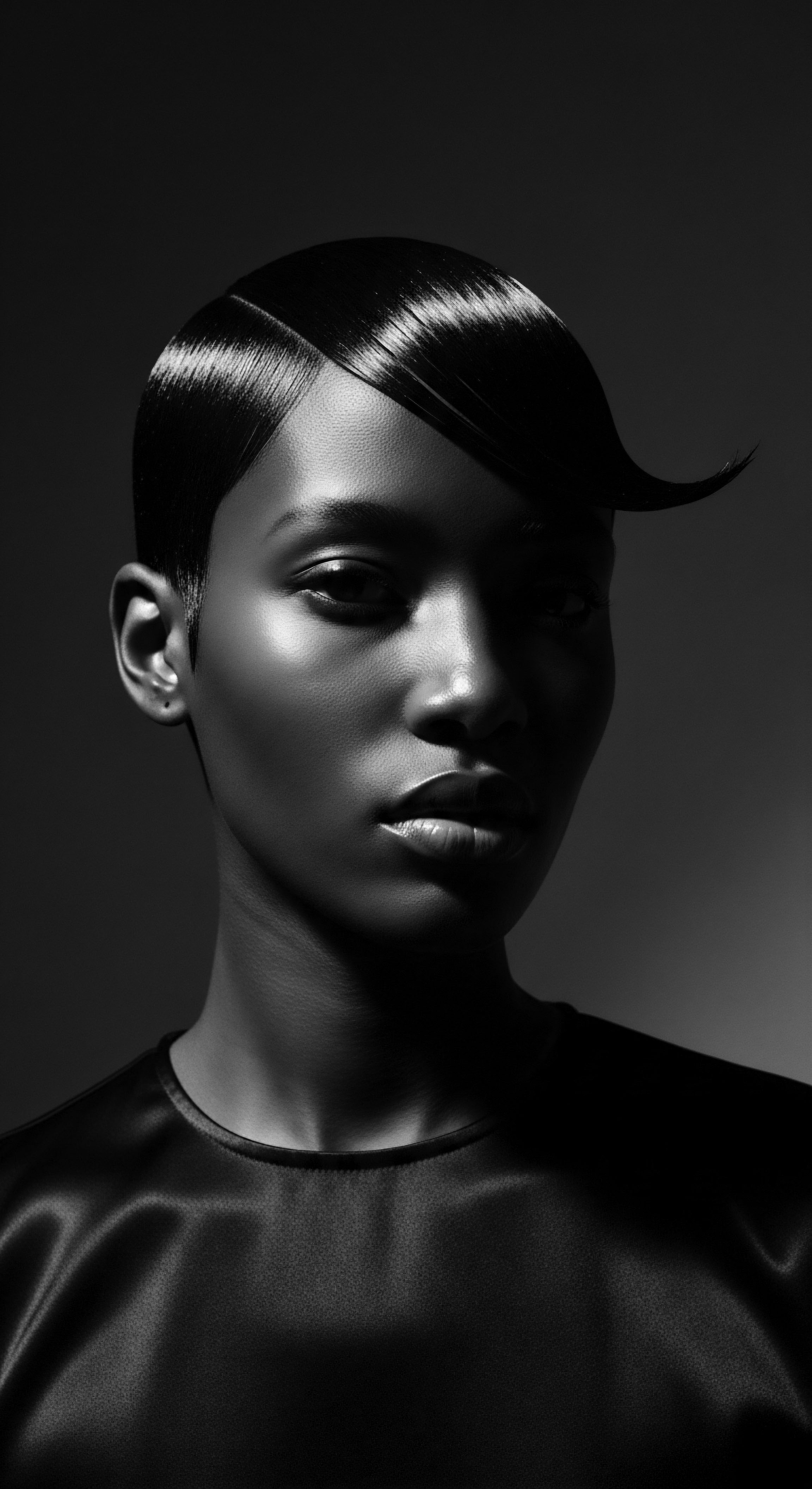
The Scientific Validation of Ancestral Chemical Wisdom
Modern Hair Care Chemistry increasingly finds itself circling back to ancestral wisdom, often providing scientific validation for practices passed down through generations. The efficacy of many traditional ingredients can now be explained through their specific phytochemical constituents and their molecular interactions with hair and scalp.
For example, the widespread traditional use of various plant oils and butters, such as Shea Butter and Coconut Oil, for moisturizing textured hair finds strong scientific backing. These natural lipids, rich in saturated and unsaturated fatty acids, have been shown to penetrate the hair shaft, reducing protein loss and providing superior moisture retention compared to synthetic alternatives. The presence of lauric acid in coconut oil, with its smaller molecular size, allows it to deeply permeate the cortex, offering internal conditioning. Similarly, the anti-inflammatory and antimicrobial properties observed in many traditional herbs, like those found in Chebe Powder or various African botanicals (e.g.
baobab, moringa), are attributed to complex mixtures of phenolic compounds, saponins, and other bioactive secondary metabolites. These compounds interact with the scalp microbiome and hair follicle environment, contributing to overall scalp health and promoting conditions conducive to hair growth and retention.
The academic pursuit in Hair Care Chemistry, therefore, is not merely about creating new formulations in a laboratory void. It is also a rigorous dialogue with centuries of embodied knowledge, often confirming that the efficacy of ancestral practices was, in fact, a sophisticated, empirical application of chemical principles, observed and refined over time. This interdisciplinary approach allows for the development of innovative, yet heritage-informed, hair care solutions that truly respect the unique needs of textured hair.
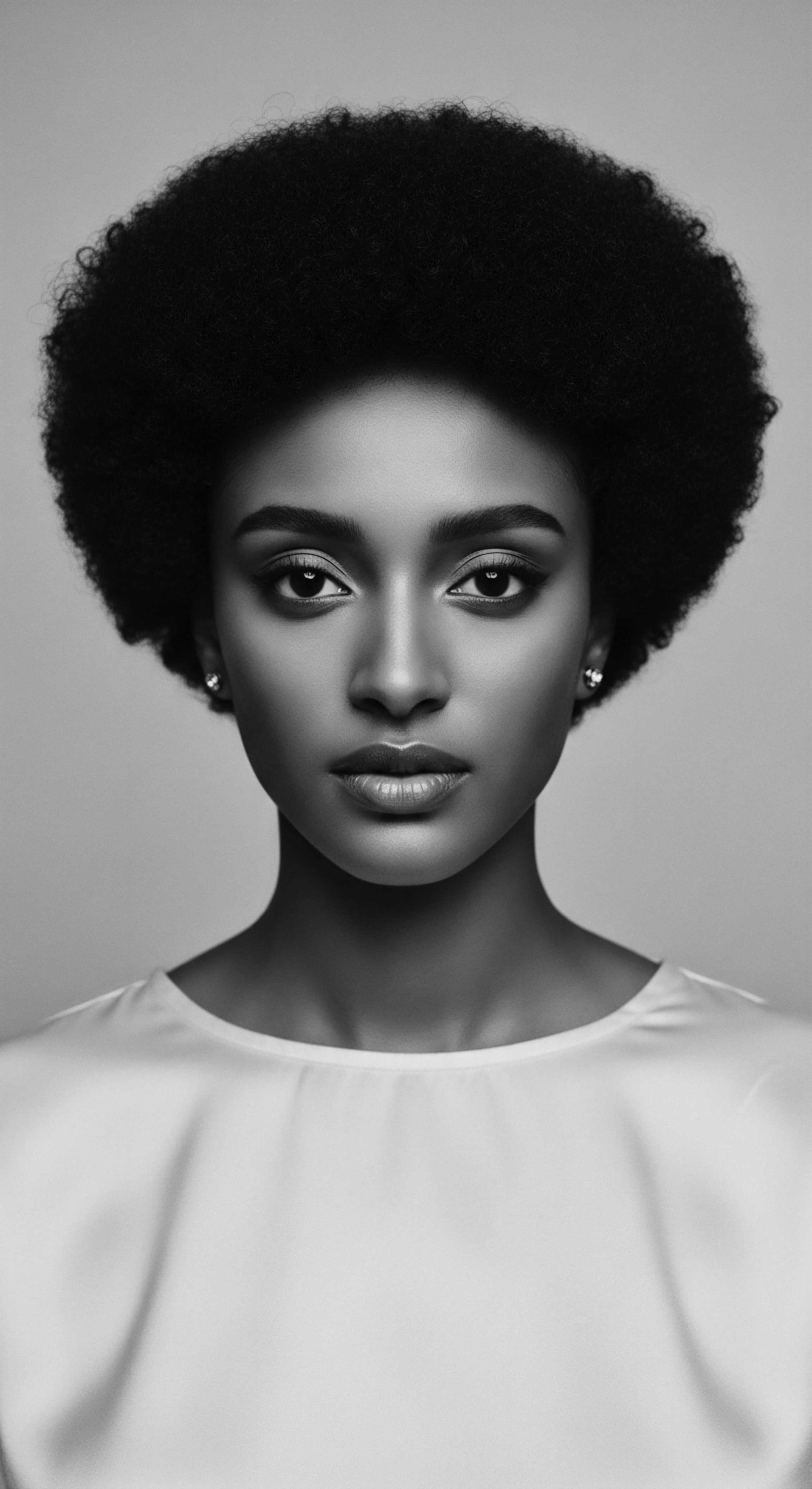
Interconnectedness of Hair Chemistry and Wellness
The academic discourse surrounding Hair Care Chemistry extends beyond mere product formulation; it critically examines the holistic implications of hair treatments on overall well-being. For Black and mixed-race individuals, hair is not merely a biological appendage; it is a profound symbol of identity, resilience, and cultural continuity. Consequently, the chemical processes applied to hair bear significant weight, affecting not only physical health but also psychological and social dimensions.
This is particularly salient when considering the long-term effects of certain chemical treatments, as mentioned previously regarding relaxers and their potential health risks. The field investigates the dermatological impact of ingredients, including sensitivities, allergies, and the potential for conditions like Central Centrifugal Cicatricial Alopecia (CCCA), which some studies suggest may be linked to chemical relaxants and certain traction styles.
Moreover, academic inquiry delves into the psycho-social chemistry of hair, exploring how societal perceptions and the chemical manipulation of hair can influence self-esteem and cultural acceptance. The historical trajectory of Black hair in the diaspora, moving from a symbol of status and communication in pre-colonial Africa to a site of oppression and forced conformity during slavery, has profoundly shaped the choices made regarding hair care chemistry. The ongoing natural hair movement represents a powerful cultural and chemical reclamation, where individuals consciously choose products and practices that celebrate their intrinsic hair texture, often eschewing chemical alterations in favor of formulations that nourish and protect the natural state. This movement reflects a shift in chemical preference, favoring gentler, plant-derived compositions over harsh synthetic agents, aligning modern hair care chemistry with a deeply rooted ancestral reverence for natural hair.
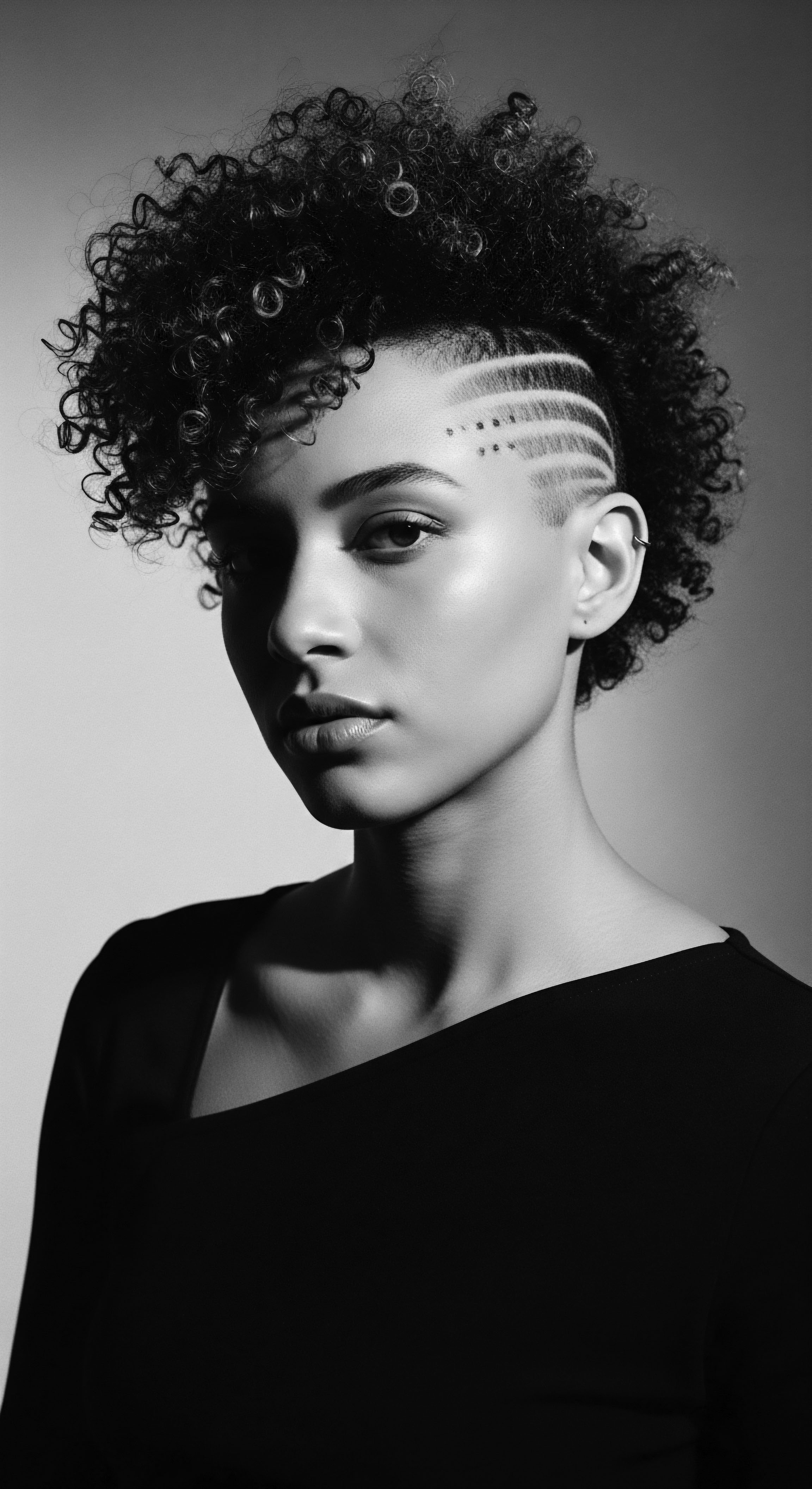
Reflection on the Heritage of Hair Care Chemistry
As we conclude this exploration of Hair Care Chemistry, particularly through the lens of textured hair heritage, a profound truth emerges ❉ the science of hair care is far from a cold, detached discipline. Instead, it reveals itself as a living, breathing archive of human ingenuity, cultural perseverance, and an enduring connection to the earth’s wisdom. From the ancestral hearths where potent botanical concoctions were lovingly prepared, to the modern laboratories deciphering the molecular secrets of a strand, the journey of hair care chemistry is intertwined with the very story of identity for Black and mixed-race peoples.
The whispers of those who came before us, nurturing their coils with earth’s bounty, remind us that effective hair care was never solely about superficial appearance. It was about health, status, communication, and spiritual connection. The deep understanding of natural ingredients – the saponins in the Gugo vine, the fatty acids in shea butter, the protective coating of Chebe powder – represents an empirical chemistry, forged through generations of observation and tradition. This inherited wisdom, often dismissed by colonial narratives, now stands validated by contemporary science, underscoring the richness of ancestral practices.
The path of textured hair through history has been one of both challenge and triumph, marked by the imposition of Eurocentric beauty standards that spurred the use of chemically altering products, and the powerful reclamation of natural textures. This journey highlights that Hair Care Chemistry is not static; it is a dynamic field, constantly evolving in response to cultural shifts, scientific discoveries, and the unwavering spirit of those who cherish their hair as a tangible link to their lineage. It is a testament to resilience, a celebration of beauty in all its forms, and a continuous invitation to honor the past while shaping a healthier, more authentic future for textured hair.
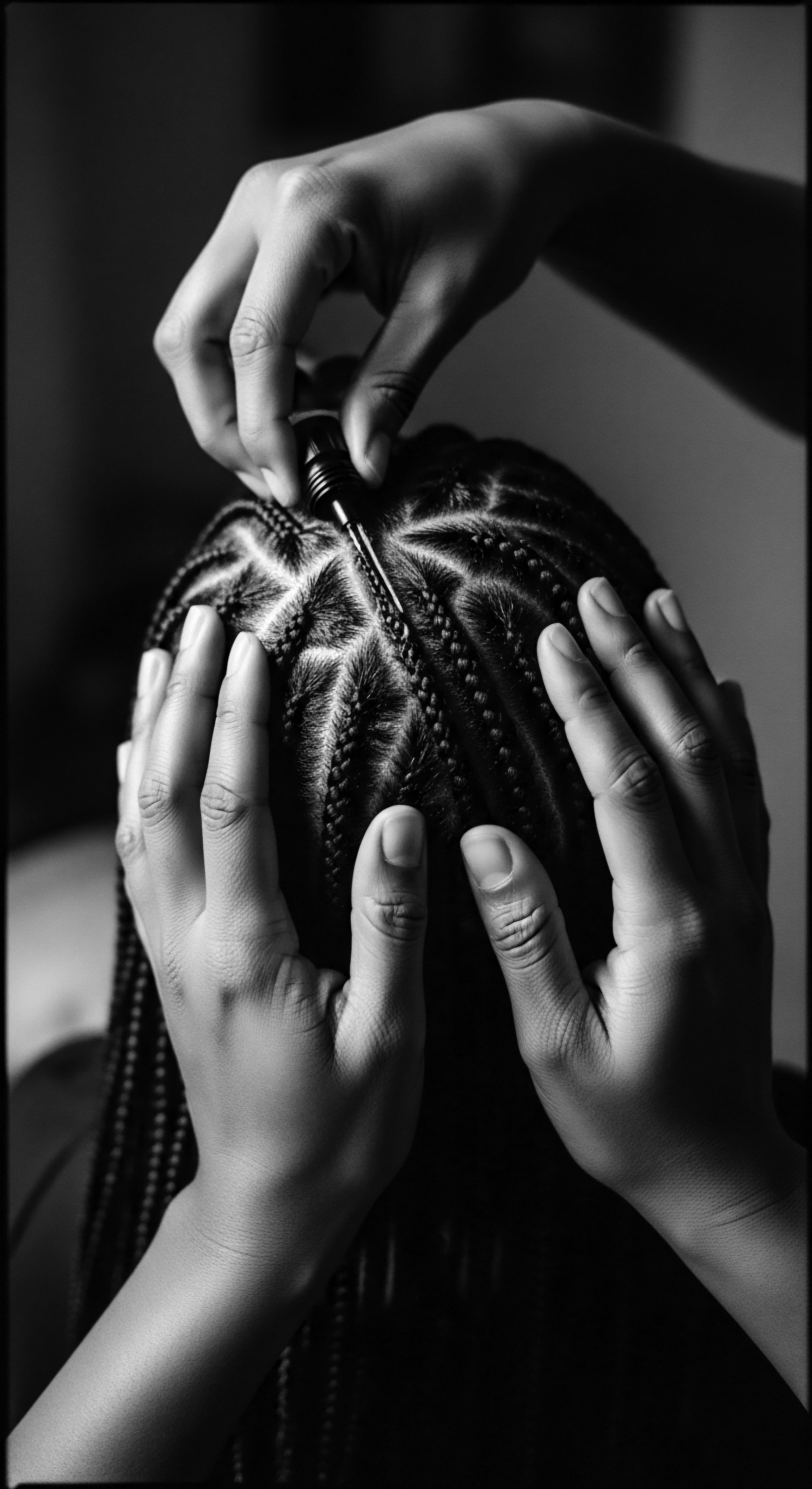
References
- Ellington, T. N. (2020). Black Hair in a White World. Kent State University Press.
- Ellington, T. & Underwood, J. L. (2020). Textures ❉ The History and Art of Black Hair. Hirmer Publishers.
- Gavazzoni Dias, M. F. (2015). Hair Cosmetics ❉ An Overview. International Journal of Trichology, 7(1), 2-15.
- Kaur, A. Singh, T. G. Dhiman, S. Arora, S. & Babbar, R. (2020). Novel herbs used in cosmetic for skin and hair care ❉ A review. Plant Archives, 20, 3784-3793.
- Rosado, S. (2003). The Grammar of Hair ❉ An Ethnographic Study of Black Hair Grooming in the United States and the Caribbean.
- Sivasothy, A. D. (2011). The Science of Black Hair ❉ A Comprehensive Guide to Textured Hair Care .
- Thompson, D. M. (2023). What Every Dermatologist Must Know About the History of Black Hair. Cutis, 112(5), 253-257.
- World Health Organization. (2002). WHO Traditional Medicine Strategy 2002-2005 .
